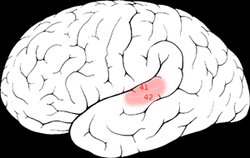.Music And It's Component.
Hey All, welcome back to another blog where we are going to discuss the Science of Music and its impact on our body basically a completely decode of music listening, or in other words Neuroscience of Music.
The scientific study of Music including writing, listening, producing, feeling, or composing music, all underlying processes will be covered.
Well, some of you must have heard about music theory and other music branches such as music psychology. So, It is clear that Music decode or Science and Music relation is not so new, it is from very old age.
Music is not so simple, It is a kinda complex thing and many things are going on behind it.
And As you know there are different types of things and genres of music such as pop, classical, hip-hop, etc.
Some of you may have searched for soothing music, romantic music, or motivational music. I am pretty sure, You can easily find the difference between the different genres of music or different type of music.
So, What makes you feel the difference, of course, to decode that we need to find what it is made of; that's what makes the difference.
Music has the following features which act as its cell: Pitch, Melody, Rhythm, Tonality, etc.
Let's Talk about all of them one by one:
Pitch: Basically we can say that Pitch is the quality of sound that decides "Higher" or "Lower" of any music. And, Some of you must be arguing that Sound molecules vibrate at different frequencies and that is right, moving on.
Melody: A Melody, likewise tune, voice, or line, is a straight progression of melodic tones that the audience sees as a solitary substance. In its most strict sense, a melody is a blend of pitch and cadence, while all the more metaphorically, the term can incorporate progressions of other melodic components, for example, apparent tone.
Rhythm: Rhythm is a repeated pattern of sound. It strikes the belt and parabelt areas of the right hemisphere of our brain.
Tonality: Tonality refers to the element relation of melody and tones.
Now, Let's discuss different parts affected by each one of them.
Brain Part affected by Pitch:
 |
| Pic credit: Wikipedia |
Brain Part affected by Rhythm:
 |
| Pic credit: Tulane |
Brain Part affected by Melody:
 |
| Pic credit: Hindawi |



2 Comments
Comment Down Here, If it Helped You.
ReplyDeleteStunning page
ReplyDelete